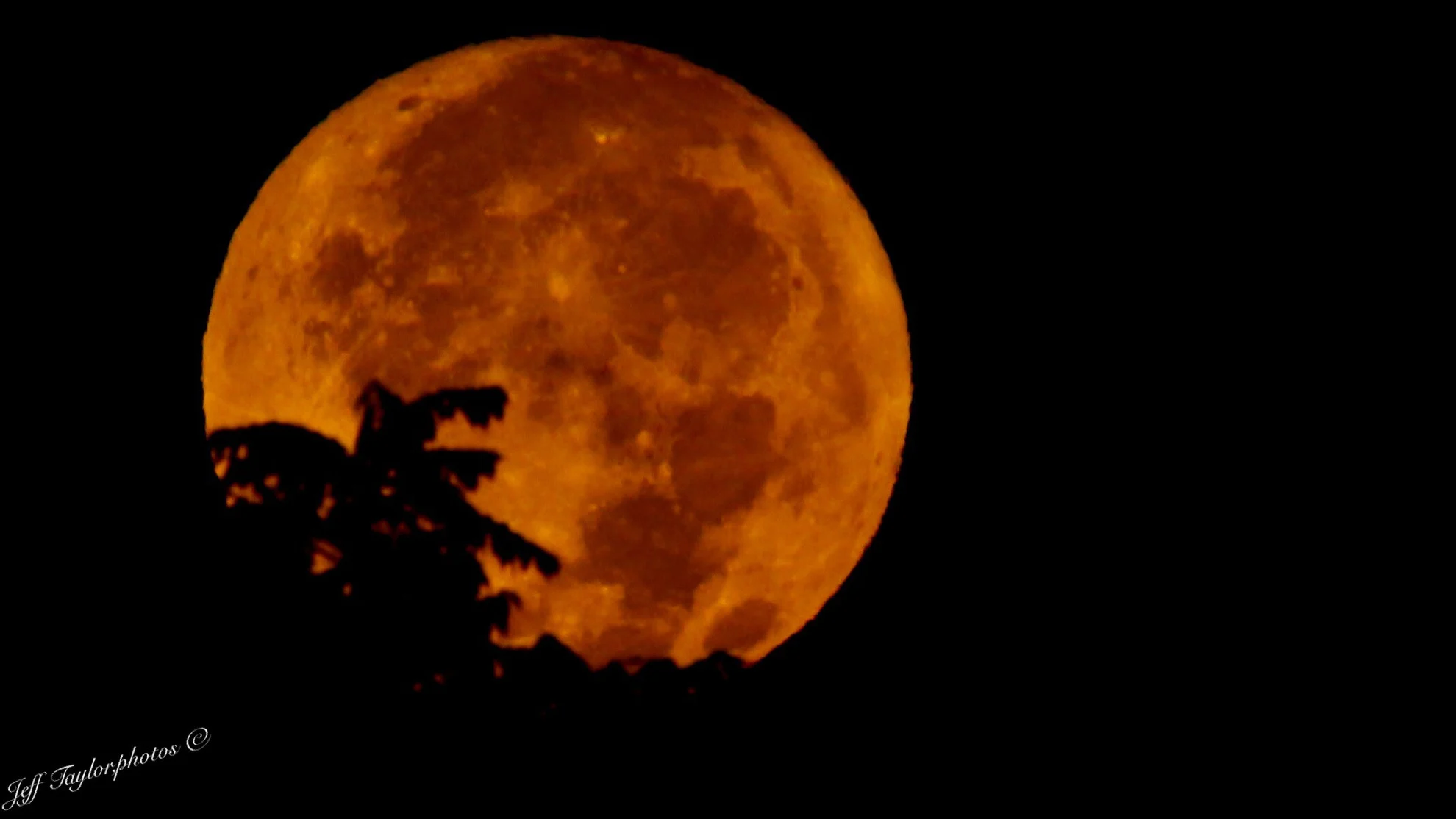
Look up Monday night to see the Full Harvest Corn Moon
The fourth and final Full Moon of Summer 2021 rises Monday night.
If you have clear skies and a few moments to spare on Monday night, pause for a bit to look up at the Full Moon.
On the night of Monday, September 20, this month's Full Moon will rise. It goes by a couple of names. By tradition, it's called the Corn Moon. It's also 2021's Harvest Moon.
Plus, if you're keeping track, it rounds out a Blue Moon Summer, and it is the smallest and farthest Full Moon so far this year.
Visit our Complete Guide to Fall 2021 for an in-depth look at the Fall Forecast, tips to plan for it and much more!
'CORN' MOON? 'HARVEST' MOON? WHAT DO THESE NAMES MEAN?
Each Full Moon of the year goes by a common name, taken from First Nations, Colonial American, or European folklore.
For September, the Full Moon is typically called the Corn Moon. According to the Old Farmer's Almanac, this is due to it corresponding with the time of harvesting corn. It also goes by Autumn Moon, Drying Grass Moon, Falling Leaves Moon, Yellow Leaf Moon, and even Ice Moon, depending on which folklore you follow.
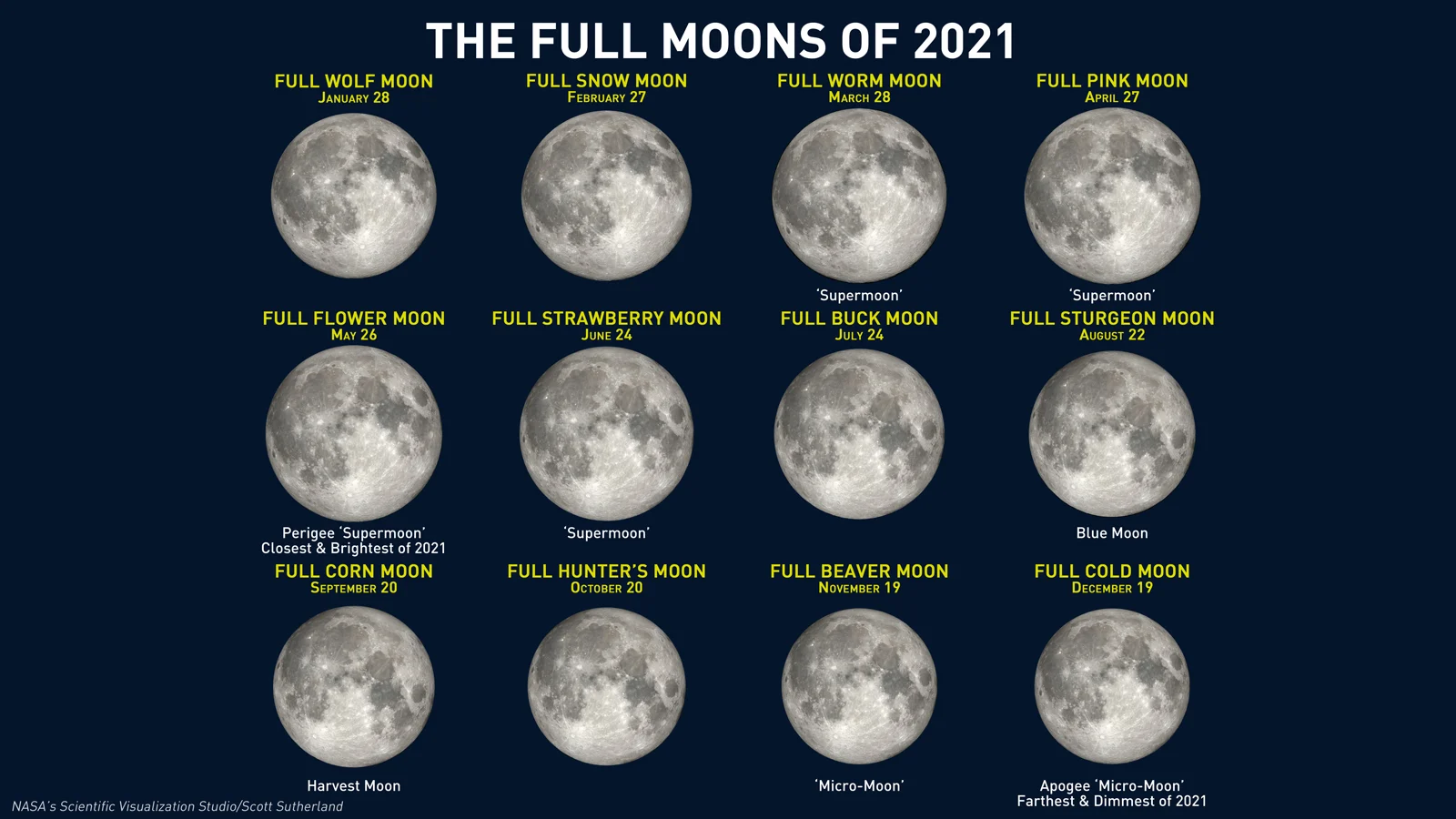
This graphic collects all the relevant data about each Full Moon of 2021, including their popular names, whether they are a 'super' or 'micro' Moon, a perigee or apogee Full Moon, and whether they are remarkable in some other way (Blue Moon or Harvest Moon). Credit: NASA's Scientific Visualization Studio/Scott Sutherland
This year, the September Full Moon has another name.
Each time the Autumnal Equinox comes around, the Full Moon closest to that date — either before or after — is called the Harvest Moon.
In 2020, the Harvest Moon was on the 1st of October, and it was the first time in 46 years that a Full Moon was only called by that name. This was due to the fact that there were two Full Moons in that month, with the second — on October 31 — taking the traditional name of the Hunter's Moon.
Most often, though, and this year included, the September Full Moon is the Harvest Moon.
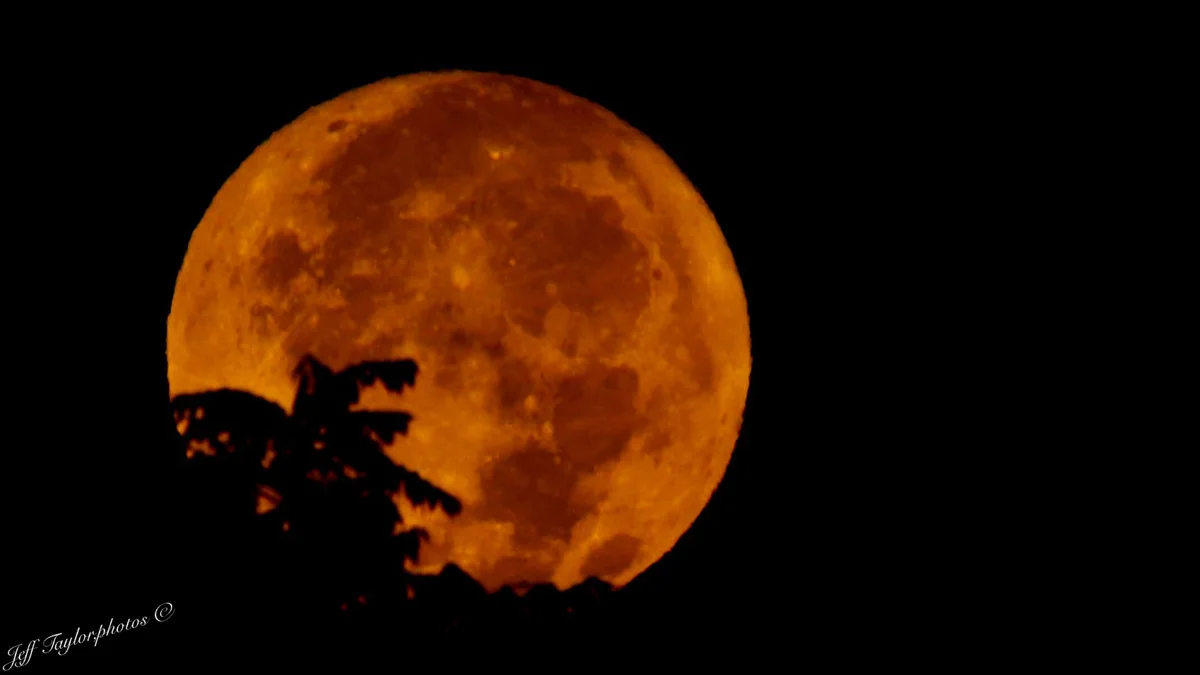
The Harvest Moon. Credit: Jeff Taylor/UGC
According to NASA, "In the days before electric lights, farmers across the Northern Hemisphere depended on bright moonlight to extend the workday beyond sunset. It was the only way they could gather their ripening crops in time for market. The full Moon closest to the autumnal equinox became 'the Harvest Moon,' and it was always a welcome sight."
The Harvest Moon was such a boon to farmers because of an interesting quirk that results from it coinciding so closely with the equinox.
Each night, the Moon rises an average of 50 minutes later than the night before. Around the Full Moon closest to the Autumnal Equinox, though, that shrinks to between 20-30 minutes. So, for the few days before and after the Harvest Moon, the Moon rises right around sunset. Thus, it continues to provide a bright source of light in the sky to work by.
While most names given to this Full Moon are relatively old, we have had the opportunity to add a few new ones recently.
"Newer names for this Full Moon are the GRAIL Moon and the LADEE Moon, named for two lunar robotic missions launched in September," says NASA's Gordon Johnston.
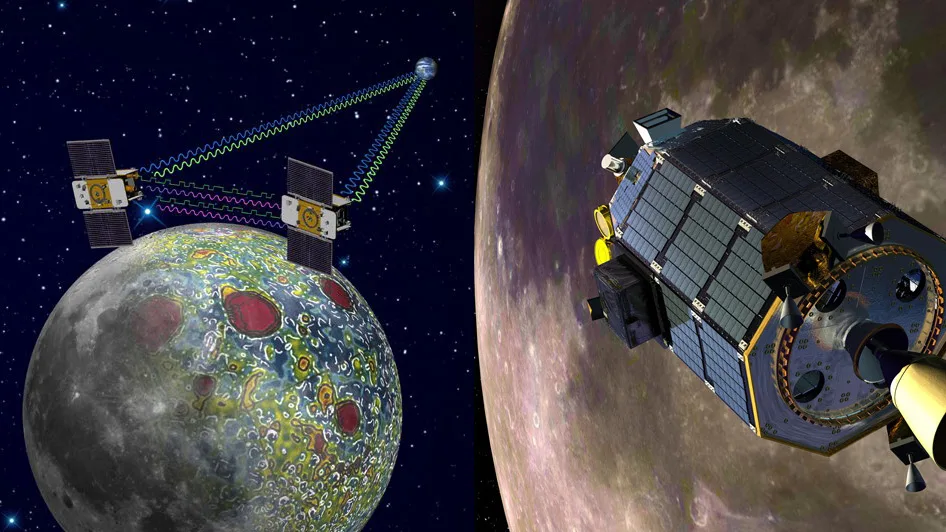
GRAIL, on the left, beams back lunar gravitational field measurements to Earth. On the right, LADEE orbits the Moon to explore its atmosphere and how dust behaves in the lunar environment. Credit: NASA/JPL-Caltech
NASA's GRAIL mission, with its twin Ebb and Flow satellites, launched in September 2011 and spent just over a year mapping out the lunar gravitational field. The two spacecraft were then crashed into the Moon's surface in December of 2012. LADEE stands for Lunar Atmosphere and Dust Environment Explorer, which NASA launched to the Moon in September 2013. As its name implies, this robotic spacecraft orbited the Moon to analyze its tenuous atmosphere and the behaviour of lunar dust before being purposefully crashed into the lunar surface in April of 2014. Data sent back by both of these missions furthered our scientific knowledge about the Moon, which will help us when humans once again fly there and land on its surface.
NOT ALONE IN THE SKY
This Full Moon will not be alone as it crosses the night sky.
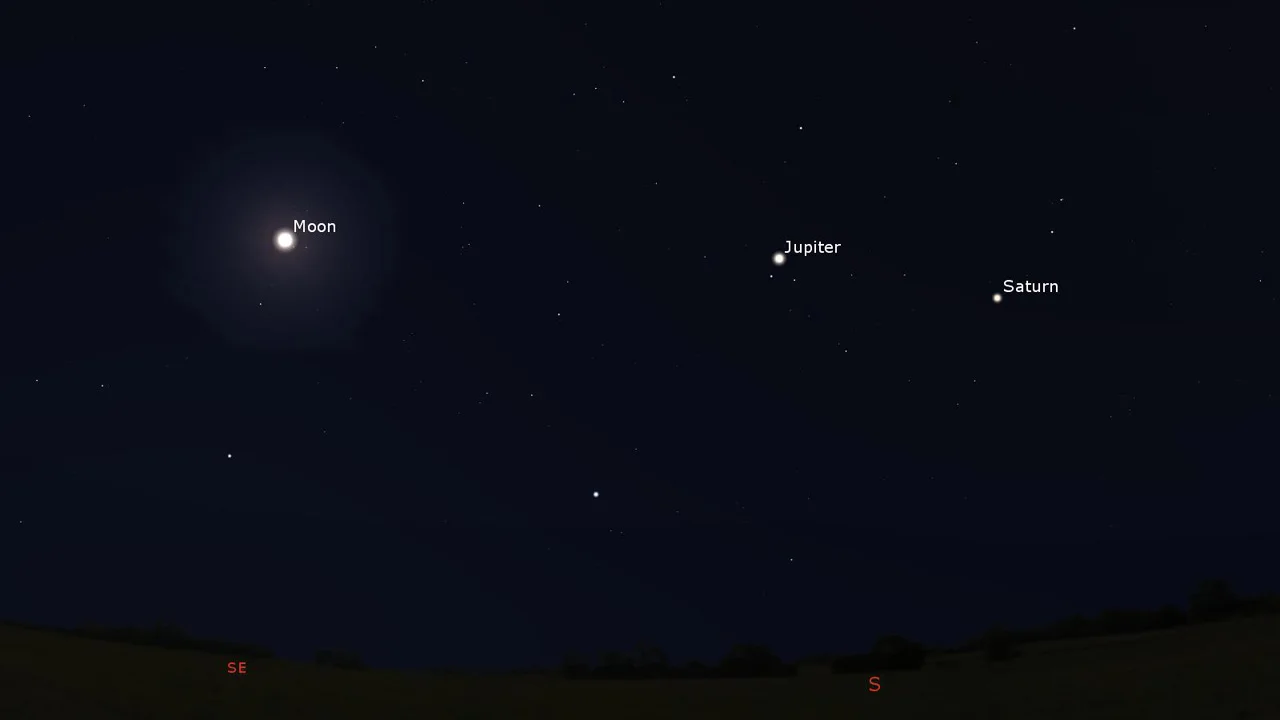
*The southeastern night sky after sunset on Monday, September 20, 2021, shows the Full Moon with Jupiter and Saturn nearby. Credit: Stellarium
When you look up at the Full Moon on Monday, shift your gaze just to the right of it by a bit, and you will see two bright 'stars'. Depending on how much light pollution you have in your sky, these may be the only two stars visible, and the one farther from the Moon might be a bit more challenging to see. These two 'stars' are the largest planets in our solar system — Jupiter and Saturn.
BLUE MOON SUMMER?
With each of our four seasons lasting roughly 3 months and typically one Full Moon per month, you could expect there to always be three Full Moons each season. However, our astronomical seasons don't line up perfectly with our calendar months. For example, Summer began on June 20, and it ends on September 22. So, technically, the season spans over 4 months. Thus if the timing of the Full Moons is just right, you can see four in the same season.
It just so happens that 2021 is one of the years where this occurs. The first Full Moon of Summer was on June 24. Then, the following two Full Moons were on July 24 and August 22. Finally, the fourth and final Full Moon of the season comes up on September 20.
With four Full Moons this season, the third of those — on August 22 — was a Blue Moon. In this case, it was the Blue Sturgeon Moon (or 'Blue Corn Moon' if you follow some indigenous Moon lore).
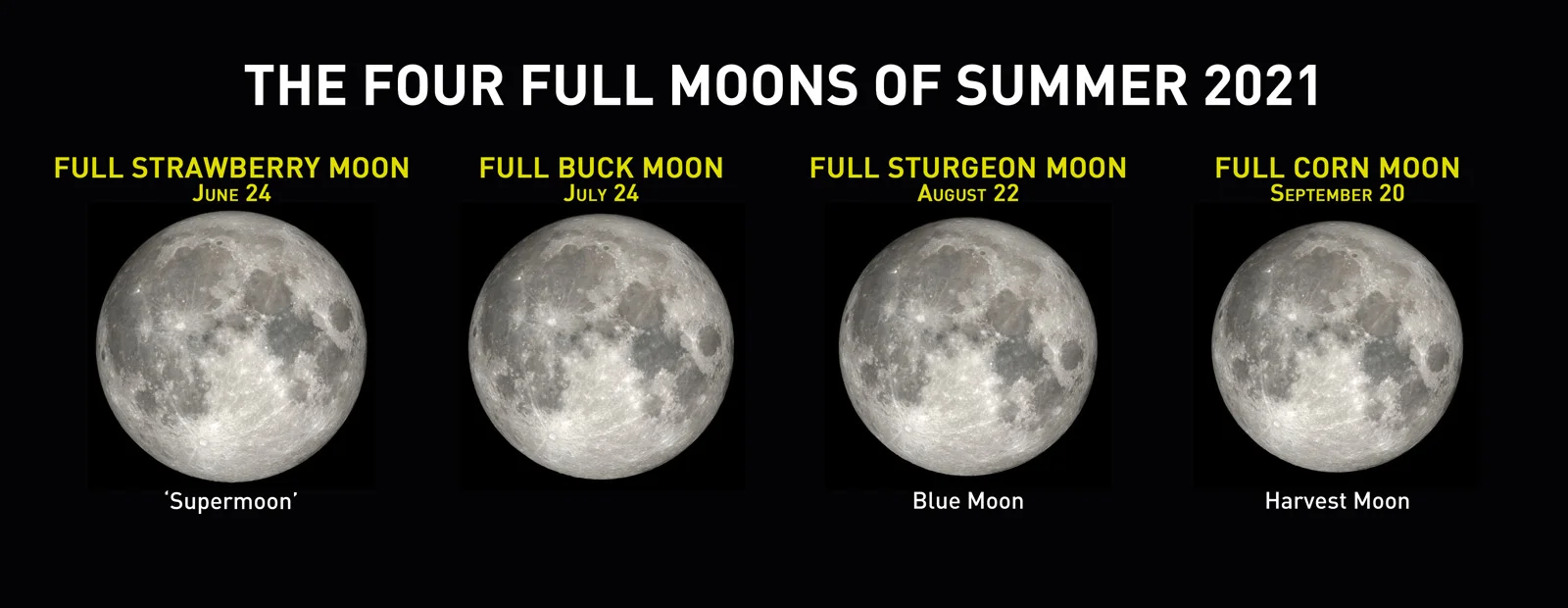
The four Full Moons of 2021. Credit: NASA's Scientific Visualization Studio/Scott Sutherland
One of these 'seasonal Blue Moons' occurs every few years. The last one before this was on May 18, 2019, when we saw four Full Moons in the spring. The next seasonal Blue Moon will be on August 19, 2024, when we will see four summer Full Moons again.
There's another kind of Blue Moon, by the way. Although it's not the original definition of Blue Moon, the name is also applied to the second of two Full Moons that occur within the same calendar month. The last time we saw one of these was in October of 2020. The next time will be in August of 2023.
FARTHEST, SO FAR, IN 2021
As the Moon orbits the Earth, it does not trace out a perfect circle. Instead, its path forms an ellipse. So, for roughly half of the month, the Moon is closer to Earth, and for the rest of the month, it is farther away.
Throughout the year, this produces a pattern where each month, the Full Moon occurs closer and closer to Earth until we have what's known as the year's Perigee Moon. Then, each Full Moon occurs farther and farther until we have the year's Apogee Moon. This pattern changes year by year, as well.
In January, we were already part-way through the cycle of Full Moons getting closer, which began after the October 31 Halloween Micro Blue Moon. So, on the night of the January 28 Full Moon, it was just over 381,000 km away. Then the Full Moons drew closer over the next four months until the May 26 Perigee Moon occurred at 357,463 km away (making it a supermoon). Since then, the Full Moons have been getting farther away.
The September 20th Full Moon will be the farthest of the year so far, at just over 390,000 km away.
The Full Moons will continue getting farther away this year until December 19, when the cycle will start all over again.
THE MADDENING MOON ILLUSION
Seeing the Full Moon at any time of night is a spectacular sight. However, go out just after moonrise or just before moonset, and you may catch an exceptional treat. It's not something the Moon itself is doing, though. Instead, it's due to a trick of our mind known as The Moon Illusion.
There are times when the Moon actually does look bigger to us, such as during a supermoon, when the Moon is physically thousands of kilometres closer to Earth than usual. There are other times, however, when we just think it looks larger.
As our eyes take in the world around us, our brain knows from experience that objects close to us tend to appear larger and in focus. In contrast, distant objects tend to be tiny and blurry. From this, it also knows that for a distant object to appear in focus, it must be very large.

This close-up of the Harvest Moon was snapped in Calgary, AB, on September 13, 2019. Credit: Siv Heang
So, when we see a bright Full Moon hanging crisp and clear in the sky above the horizon, it is contrasted by all of the objects on the ground, which appear smaller and blurrier the closer they are to the horizon. This combination confuses the brain. To compensate, the brain interprets the Full Moon as being much bigger than it truly is. To be clear, the Moon is certainly much larger than any of the objects on the horizon (it's 3,474 km across), but this 'illusion' gives us the impression that the Moon looks enormous!
Look up into the sky closer to the middle of the night, and the Moon will be high above our heads. Usually, it will be the only thing we see, other than the stars and maybe a few planets. At that time, the brain is focused only on the Moon, and without the other objects in the field of view to complicate matters, it is free to just 'see' its actual size.
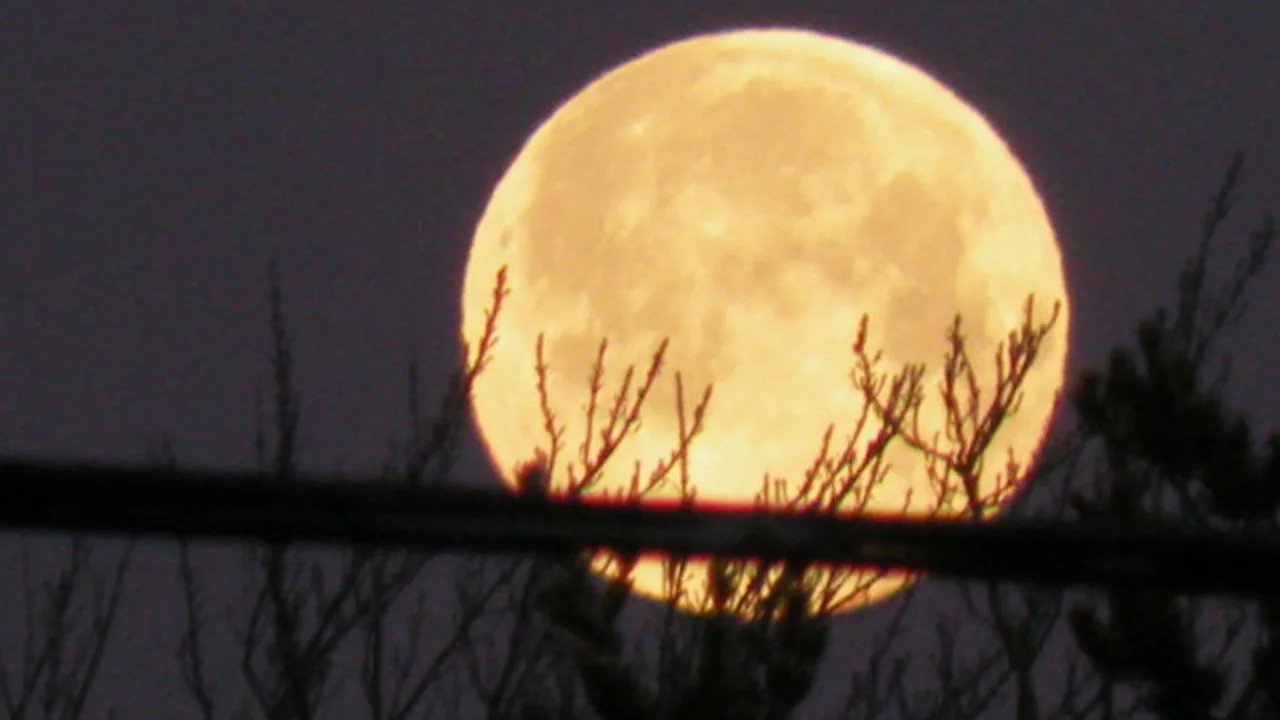
This zoomed-in image of the Full Snow Moon was captured from Salisbury, NB, on February 9, 2020, and uploaded into the Weather Network's UGC gallery. Credit: Darlene MacLeod/Smith
We have a few tricks of our own that can cancel out the Moon illusion, though.
For the first one, we don't need technology. Just go outside after sunset and find the Moon near the horizon. Stretch your arm out towards it, and cover the Moon over with your thumb or even your pinky finger. Note how big the Moon looks compared to the digit in question, and keep that in mind. Maybe even take a picture of it, if you want. Later in the night, check out the Moon again when it is high in the sky. It may appear smaller than when you saw it earlier, but repeat the step to cover it over with your thumb or finger. Compare it with what you saw before, and you'll find that the Moon is actually precisely the same size at both times.
There is a way technology can help us, though. When the Moon is low on the horizon, take out your cellphone, turn your camera on, and point it at the Moon. Note: it is possible for the Moon illusion to still work on us when looking at a picture or video. This is because the brain will make the same judgments of distance, blurriness, and size it did when looking at a 'live' scene. Still, directly comparing what we see in the sky at that time to what is shown on our small cellphone screen can help put things into better perspective. Plus, you can also take a few pictures to upload into the Weather Network UGC Gallery while you're at it!






